21 Types of Bread To Try at Least Once
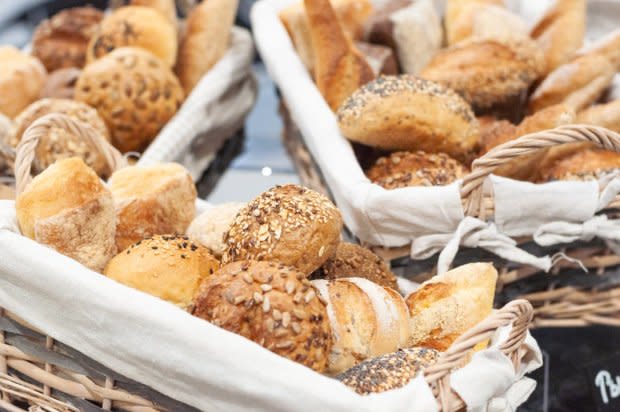
Even if bread is your favorite food group and you count homemade banana bread and/or sourdough among your list of baking accomplishments, you may not know half of what lies beneath conventional loaves at your local grocery store. In fact, there are many different types of breads and names of bread that you might not know about.
Although most bread recipes begin with four basic ingredients—flour, water, salt and yeast, there are infinite ways to differentiate the final product beginning with the yeast, says Chef Richard J, Coppedge, Jr. certified master baker, professor in baking and pastry at the Culinary Institute of America. “A good bread baker’s kitchen is like an apothecary in that everything is weighed and must be mixed correctly,” Coppedge says.
Most breads fall into one of two categories: They’re either made with commercially-manufactured yeast found in store-bought packets, or sourdough yeast (the bowl of goo many bakers “feed” regularly). There are also chemical leaveners, like baking powder and baking soda; these are used in quick breads, which are often enriched with ingredients such as sugar, eggs, milk and butter.
But let’s get back to the basics: Lean doughs (those made without enriching ingredients) may also vary by flour type, rise time and shape, which is often dictated by culture or tradition.
Here is an exhaustive but incomplete list of the many bread names, types of bread and different types of breads you may encounter if you count yourself among bread’s biggest fans or would like to add bread baker to your resume:
21 Different Types of Bread
Sourdough
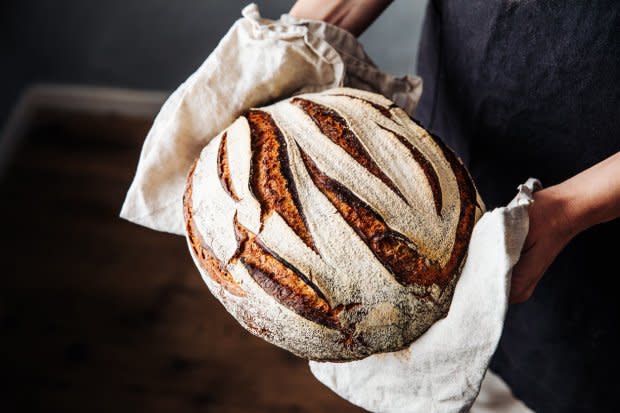
iStock
With a firm crust and a moist, chewy center, sourdough breads can come in a variety of shapes and sizes. Thanks to the acid fermentation that takes place in sourdough starter and lowers a bread’s pH, these breads have a sour tanginess that can take anywhere from days to hours to develop, says Coppedge, who likes to share that his starter dates back to before he was married in 1986. Sourdough bread flavors range widely based on the type(s) of flour they contain. The sourness depends on your grain of choice and how much starter, or yeast, is used.
Focaccia
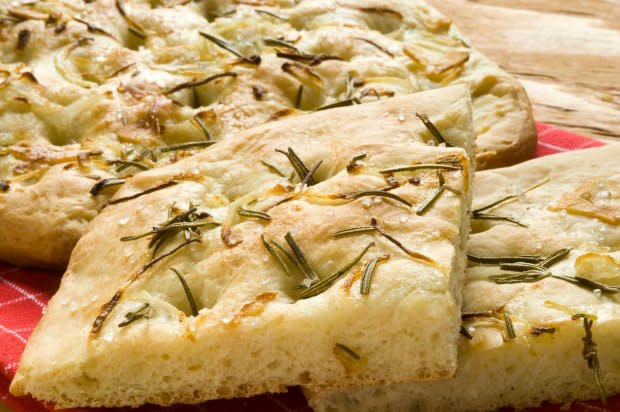
iStock
This soft, flat-style Italian bread is thicker than pizza but thinner than say, a baguette. Coppedge characterizes this bread as “enriched” as it contains oodles of olive oil that is poured on top of the dough before it goes into the oven. While it’s inherently dairy-free, focaccia can be topped with anything from rosemary and salt to caramelized onion and various cheeses. Served in squares, strips or wedges, it has a “velvety tender crumb and crust,” Coppedge says.
Banana Bread
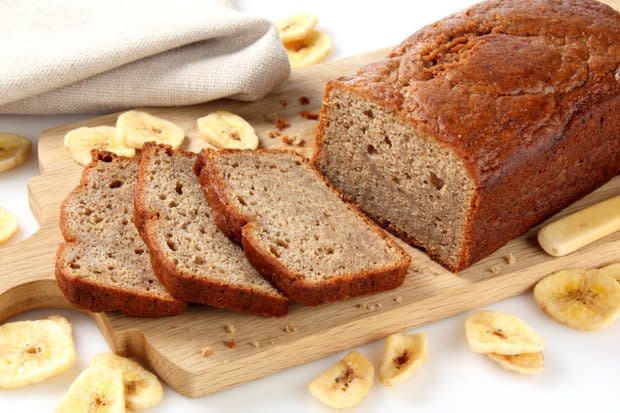
iStock
A popular quick bread, banana bread is enriched with sweeteners as well eggs and milk. “You scale the ingredients, mix them and pop them in a pan in a preheated oven,” says Coppedge, reciting recipe directions that pale in comparison to sourdoughs that can take days to rise.
With a soft and tender consistency, banana bread’s closest cousin would be cake if it weren’t for its shape—Banana bread is traditionally baked in a loaf pan. Coppedge recommends storing peeled bananas in a sealed plastic bag in the fridge for several days before tossing them into your banana bread batter, liquid and all. “The more ripe or rotten the bananas, the better since you want the starch to convert to sugar,” he says.
Related: 44 Best Fruit Bread Recipes
Boston Quick Bread
Also referred to as New England Brown Bread, this dark-colored, whole-wheat bread gets its rise from chemical leveaners and its rich flavor from molasses. It’s sometimes studded with raisins and traditionally baked and/or steamed in a can, contributing to a distinctive cylindrical shape with lines akin to those you’d after dumping a firm can of cranberry sauce. Tasters describe the consistency of Boston quick bread as moist like banana bread.
Cornbread
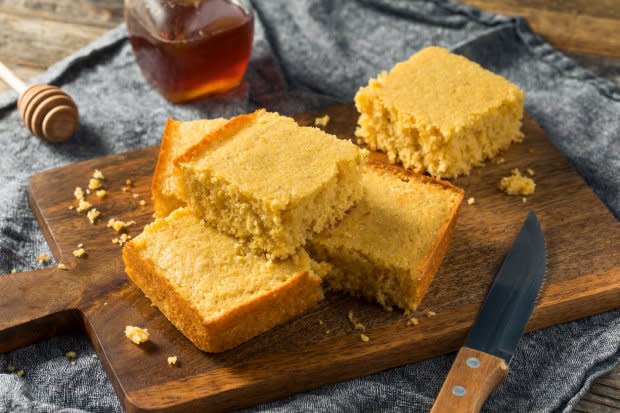
iStock
Another enriched bread, cornbread calls for oil or butter, plus milk or buttermilk. In the North, it’s typically prepared on the sweeter side whereas Southern recipes tend to contain less sugar, Coppedge notes. Either way, the primary ingredients are cornmeal and flour or cornflour. It starts as a batter rather than a dough and rises in the oven thanks to chemical leaveners.
Irish Soda Bread
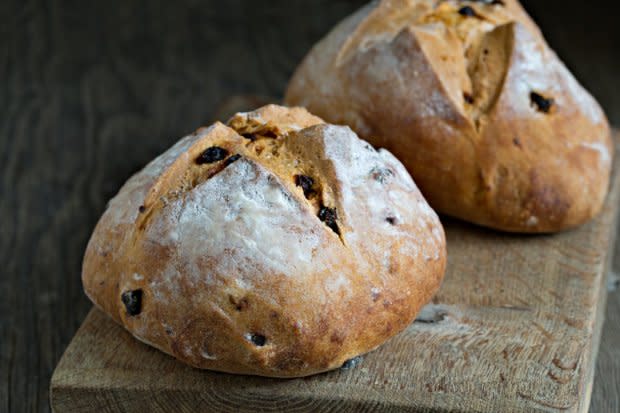
iStock
Adding to the quick bread list is traditional Irish soda bread, a raisin-laden, light-brown wholewheat bread sometimes made with caraway seeds. In the United States, Coppedge says, the preparation is sweeter, whiter and may be made with currants. “Sometimes recipes change as people migrate,” he explains.
Challah Bread
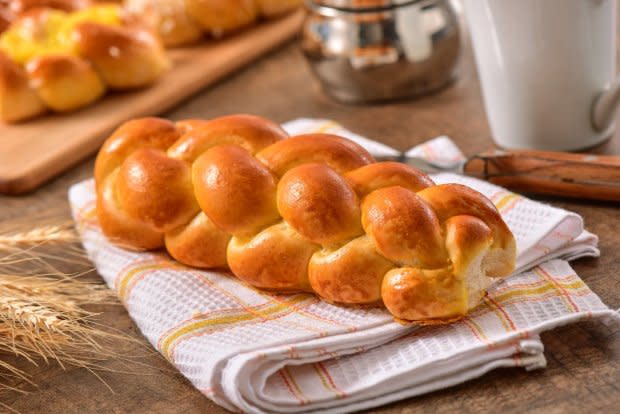
iStock
Beyond water, flour, salt and commercial yeast, challah’s ingredient includes eggs and/or egg yolks, oil, plus sugar and/or honey, Coppedge says, adding that the yellow-y bread it’s not overly sweet. Because it’s traditionally prepared for the Jewish Sabbath during which dairy and meat aren’t mixed, challah is free of milk and butter. A distinguishing feature of the bread is its braid, which tends to be made from six strands of dough that result in very soft and somewhat elastic bread with a soft crust. In the fall around the Jewish new year, you might also find round challahs, which represent continuity.
Brioche Bread
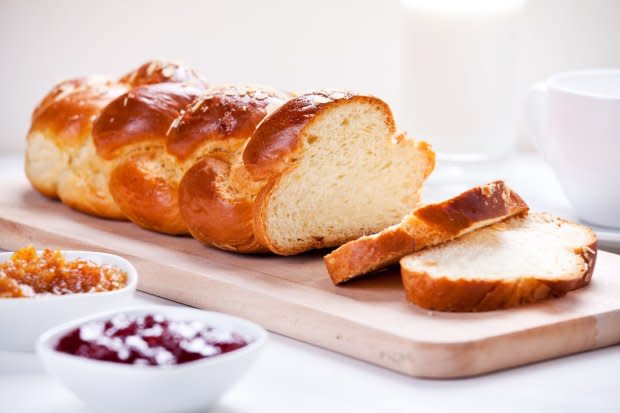
iStock
“It’s like challah, but dairy-based,” explains Coppedge of this French bread from Bordeaux. He describes brioche as “butter gorging on butter with eggs.” The highly enriched bread gets its yellow color and tenderness from said butter and yolks, but also contains added sugar and milk. Often found in bun-form, brioche bread can elevate a run-of-the-mill burger or fried chicken sandwich.
Rye Bread
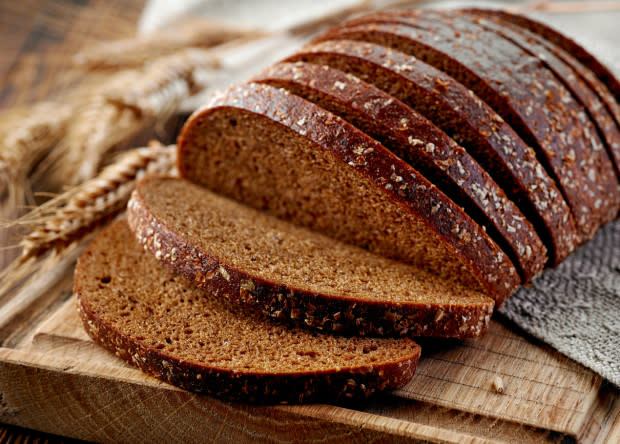
iStock
Rye bread is made from the grayish grain known as rye, and it’s particularly popular in Scandinavian countries in Eastern Europe, Coppedge says. Its texture is very heavy and it’s full of filling fiber. “After two slices, you’re ready for a nap,” he adds. If you’re envisioning the type of bread that belongs on a reuben sandwich, read on—you’re thinking of American rye.
American Rye Bread
Also known as Jewish rye, this lighter-colored bread contains some rye flour and is sometimes dotted with caraway seeds. Despite its name, only about 20 percent of its total flour content is rye. It’s a percentage that wouldn’t fly in Europe, Coppedge notes. “It’s not rye bread to Eastern Europeans,” he says. On grocery shelves, you may also spot marble rye, which features swirls of light and dark-colored rye bread dough. All American varieties tend to be less dense than traditional rye bread you’d find overseas.
Related: Basic Sourdough Recipe
Pumpernickle Bread
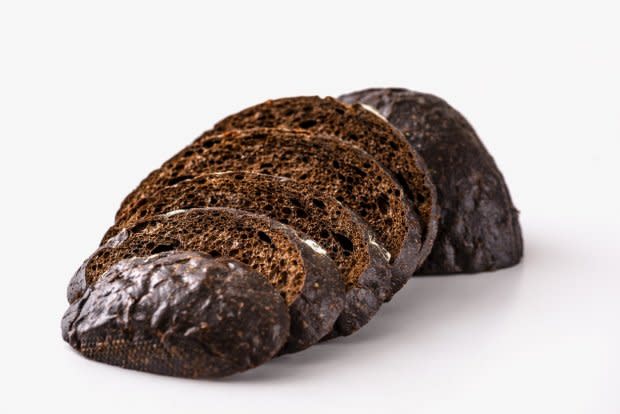
iStock
Pumpernickle bread is a dark-colored bread made with wholegrain rye. In the United States, molasses or caramel is often used to darken the bread, Coppedge says. Elsewhere, pumpernickle bread is dense thanks to its high whole grain content. It’s often sliced thin and smeared with butter or topped with smoked fish.
Multigrain Bread
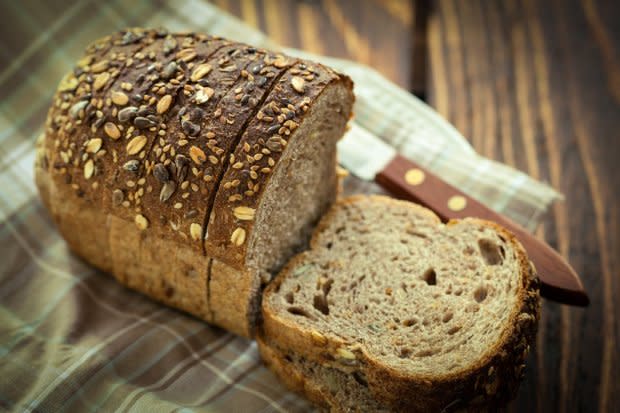
iStock
“Multigrain bread is a catch-all phrase,” Coppedge explains of the bread that can be made from basic wheat flour then sprinkled with grains for a healthful facade. When made correctly, bakers soak grains such as rolled oats, cracked wheat, rye or flax seeds in water overnight, then add them to any basic bread recipe.
”The total amount of grains can vary widely. It all boils down to what kind of grains are added and how much, so you should look for fiber content on the nutritional label,” he says, adding that he likes to throw a cup of cooked oatmeal into his multigrain breads to soften the texture.
Ciabatta Bread
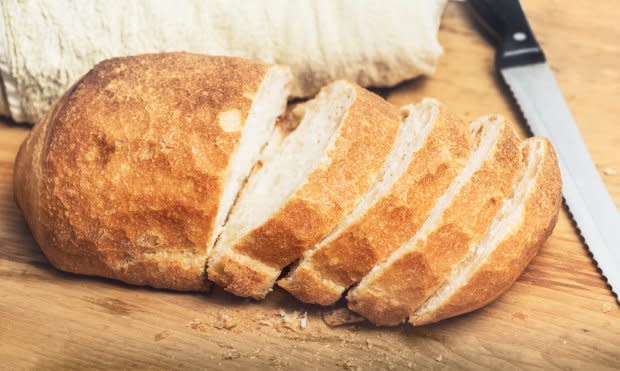
iStock
Made from flour, yeast, water and salt, ciabatta’s recipe has no bells and whistles. Its most distinct qualities are its high water content and slipper-like shape. “It has a crispy crust and a light, supple texture thanks to lots of water,” Coppedge says. “It’s a loose-style loaf that is peasant in its origin.”
Baguette
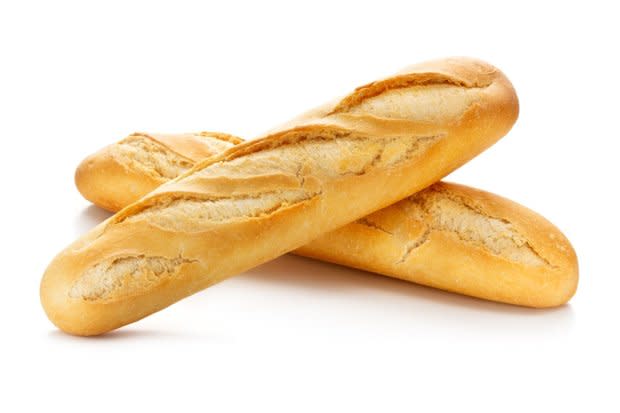
iStock
Also known as French bread, another catch-all term, baguettes are long, soft loaves with hard crusts that are highly regulated for length and freshness in France.
Pita Bread
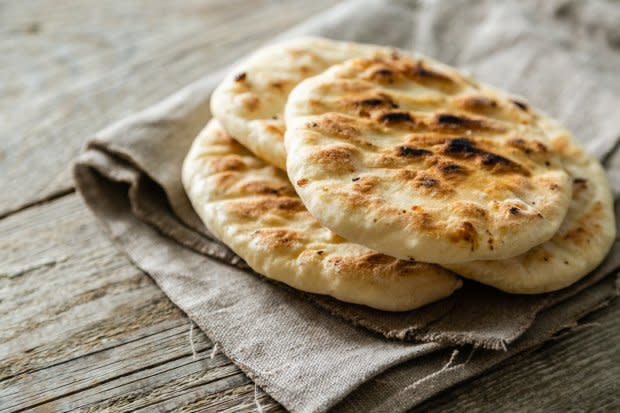
iStock
This Middle-Eastern flatbread is known for its pocket. Made from flour, water, a little yeast and a little salt, it’s shaped into disks tossed into a super hot oven where it reacts by puffing up to form an air pocket. Pitas can be filled, topped or torn and dipped.
Matzah
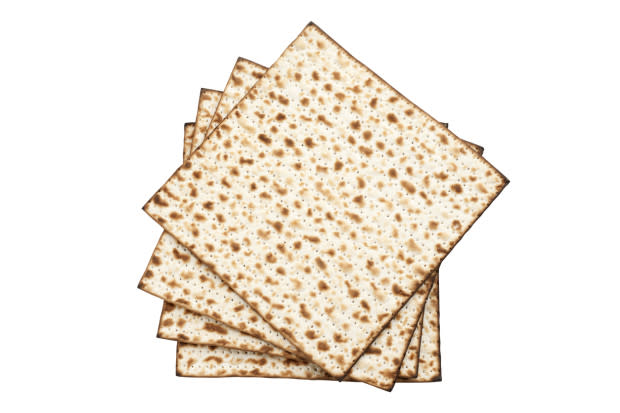
iStock
Hard like a cracker, matzah bread is made under Kosher supervision using water and flour that’s mixed and baked in fewer than 18 minutes to prevent the enzyme activity that would otherwise cause it to rise, Coppedge says. It’s traditionally eaten for Passover by Jewish people in honor of their ancestors who had no time to wait for the bread to rise when fleeing slavery.
Naan
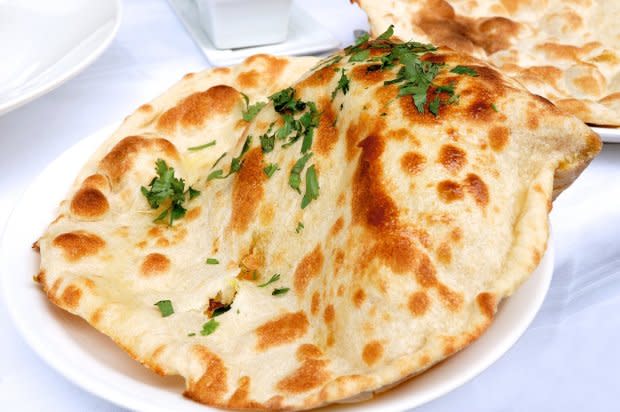
iStock
Also a flatbread, this soft and sometimes sticky, Naan bread is made with yogurt for softness and acidity. It’s slapped on the inside of a hot beehive oven that “could burn the hair off your arms,” Coppedge says. There, it is cooked for 30 seconds, just long enough for it to collect black, carmelized charcoal spots. Naan bread is often served with the main course and used to mop up juices.
Related: Easy Savory Bread Recipes
Sprouted Bread
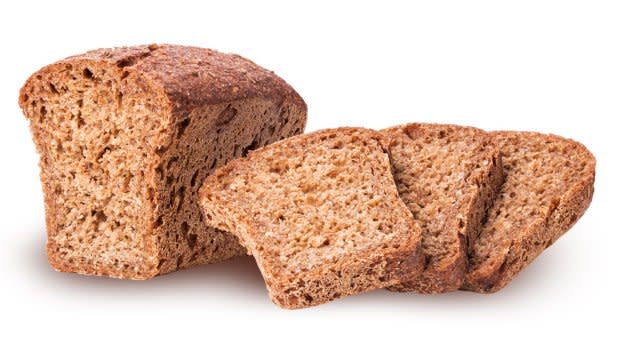
iStock
Made from grains that are moistened until they begin to sprout or germinate, sprouted breads have a heavier texture and higher fiber content than your average white bread, according to Coppedge. They’re often found in the sliced-bread section.
Bagel
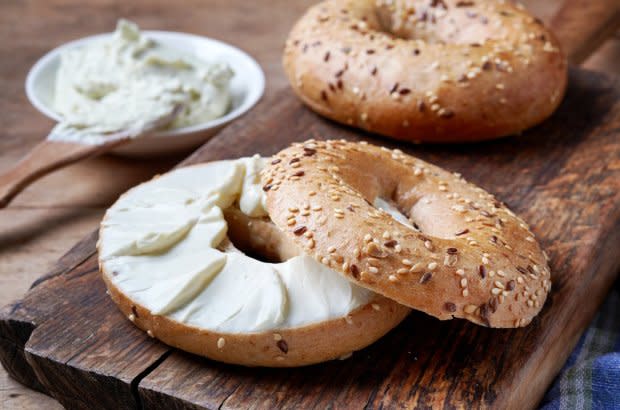
iStock
Bagels are dense and chewy disk-shaped breads often sliced in half and smeared with cream cheese and smoked fish. They’re made with a high-gluten flour that develops a tough dough, which explains why they are labor-intensive, according to Coppedge. Unlike typical breads which go right in the oven, traditional bagels are water-boiled before they’re baked. This “pregelatinizes” the starch within the flour, Coppedge explains, a chemical process that makes the crust shiny and chewier.
A distinctive feature of the bagel is its shape, which features a center hole that’s made by rolling out a strip of dough and wrapping it around the hand, then pinching the ends.
Biale
A close cousin to the bagel, biales are also disk-shaped with no hole in the middle. Biales aren’t water-boiled, so they lack a shiny crust, Coppedge explains. Instead, they are made by filling a center indentation with chopped onions, poppyseed, and oil to keep the middle soft.
Potato Bread
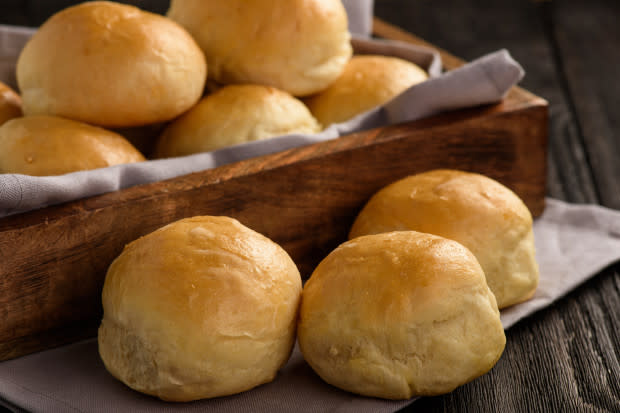
iStock
Most commonly seen found in bun form, potato bread gets its soft and subtle enrichment from potato starch and/or potato flour, which is used to replace some portion of the flour in a standard bread recipe, Coppedge says. It may also contain added sugar and milk; with potatoes, these additions contribute to the soft texture throughout.
Up next: How to Make Bread With No Yeast
